Things are heating up in Wisconsin as voters head to the polls on Tuesday in a special election for the Wisconsin Supreme Court, pitting Republican Brad Schimel against Democrat Susan Crawford. If Crawford wins, Democrat-controlled redistricting will mean that even the most conservative counties in Northern Wisconsin will find themselves with Democrat representatives in Congress—and the House may swing back to the Democrats in 2026, with catastrophic effects on President Trump’s ability to govern. This point is most easily illustrated with a series of maps.
Wisconsin has 72 counties. This map shows how the counties voted for president in the 2024 election. As you can see, on both a geographic basis and on a county-by-county basis, Wisconsin is an overwhelmingly red state, with Democrat voters clustered in the state’s major urban areas and their suburbs:
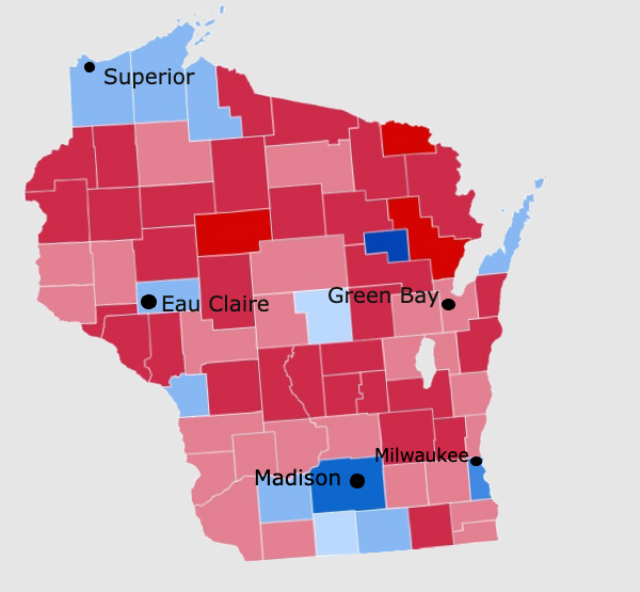
Public domain (edited to add cities).
Congressional districts encompass multiple counties. Wisconsin has eight districts in the United States House of Representatives, and those districts include multiple counties. You can see here how the congressional districts compare to the counties:
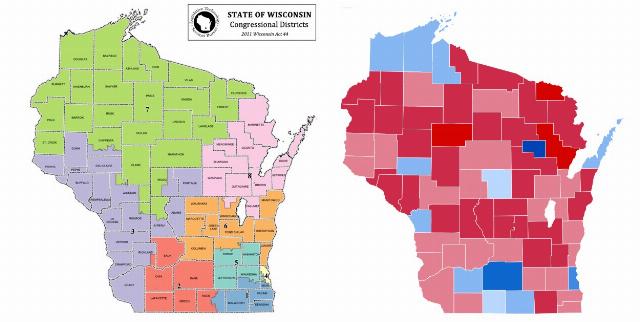
Public domain (cropped).
Those congressional districts have been formulated so that the Democrat-leaning heft of Madison, Milwaukee, Eau Claire, and Superior gives two of the state’s congressional districts to Democrats. To help you envision this, I've used my limited photo editing skills to color congressional districts by Democrat (blue) and Republican (red):
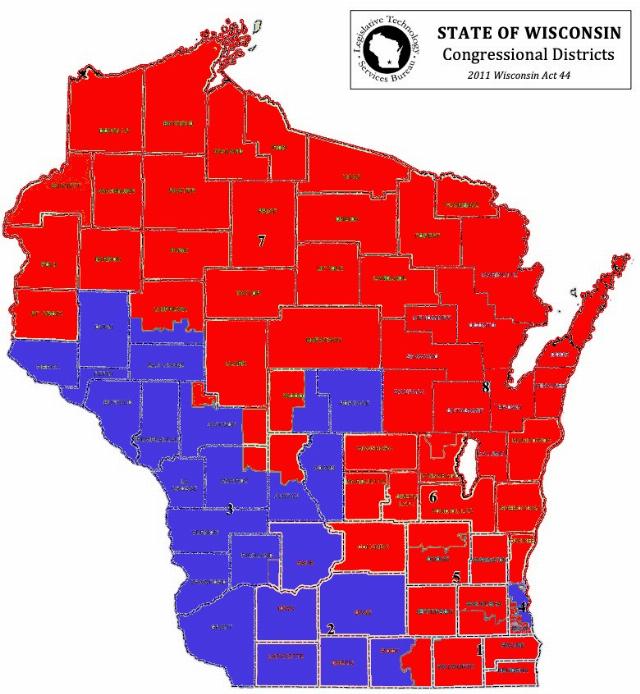
Once again, a side-by-side comparison with countries shows how the congressional districts force vast swaths of conservative countries into the Democrat category in the House of Representatives:
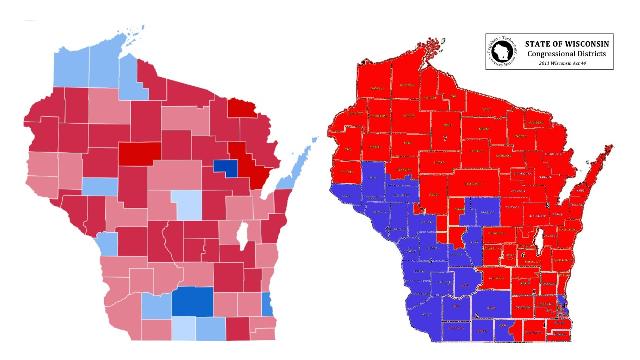
And that’s where Tuesday’s election comes in.
Democrats want to redraw the congressional districting map to expand the likelihood of placing Democrats in the House of Representatives. Matt Walsh explains it well:
I haven’t even bothered to look at their specific plans. I don’t need to because we all know how gerrymandering works. The redrawn map will take that big southern clump of blue and angle it upward to bleed over into currently solidly red rural districts. Here’s an abstract image that gives you an idea of how the plan could look:
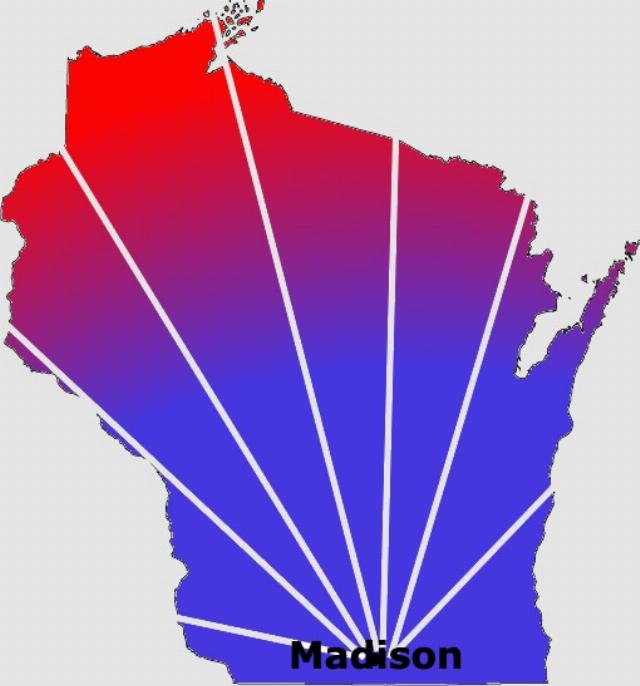
That is how gerrymandering works. Every one of the thinly populated rural districts spreading out from Madison would be completely overwhelmed by the population heft of Madison and its environs. I happen to know the region fairly well, having visited often. It’s quite lovely—and the residents are young, college indoctrinated, and fanatically leftist. Given the “correct” congressional lines, they will turn all of Wisconsin blue.
That is why this upcoming Supreme Court election is a matter of national consequence. It’s why Elon Musk has started pouring money into the race, to the hypocritical outrage of leftists who never minded when their billionaires, most notably George Soros, poured money into state races to change judgeships, prosecutorial offices, and other local races.
Wisconsin’s Democrat Attorney General, Josh Kaul, is trying desperately to keep Elon Musk from using his money to have a say in a political race with national consequences. Kaul knows about big money. According to Transparency USA, when he ran for his seat, he received $153,508 from Jonnalagedda Deepak, which is a very big single donation for an AG race in a small state. What’s interesting about Deepak is that he seems to be an individual (with an almost invisible internet presence) but is described as an “entity.” That’s weird.
Kaul also got $12,841.42 from Wisconsin’s Act Blue (and that may have been funny money) and $12,412.98 from an entity identified as “US Treasury.” (And no, I don’t understand that entry.)
All told, in an attorney general’s race that saw all the candidates combined spend $6.42 million, Kaul spent $4.8 million to win his seat. While the Wisconsin Freedom PAC (a Republican AG association) was the single largest out-of-state donor, a huge number of somewhat smaller out-of-state donations (hundreds of thousands of dollars each, not millions) came in for the Democrat candidates. I have a strong suspicion that, if I had the time, I’d discover that those organizations did not raise the money organically but, instead, received it from either George Soros entities or from the US Government.
At the end of the day, money talks, and in 2023, Kaul won. That’s why he knows how the system works and is very worried that Musk might end up having a say in this election—and again, given the national consequences, that’s not an unreasonable say for Musk to have.
But ultimately, the race boils down to Wisconsites showing up at the polls. So, if you’re a conservative in Wisconsin, vote this Tuesday as if America’s life depends on you...because it does.
No comments:
Post a Comment
Note: Only a member of this blog may post a comment.